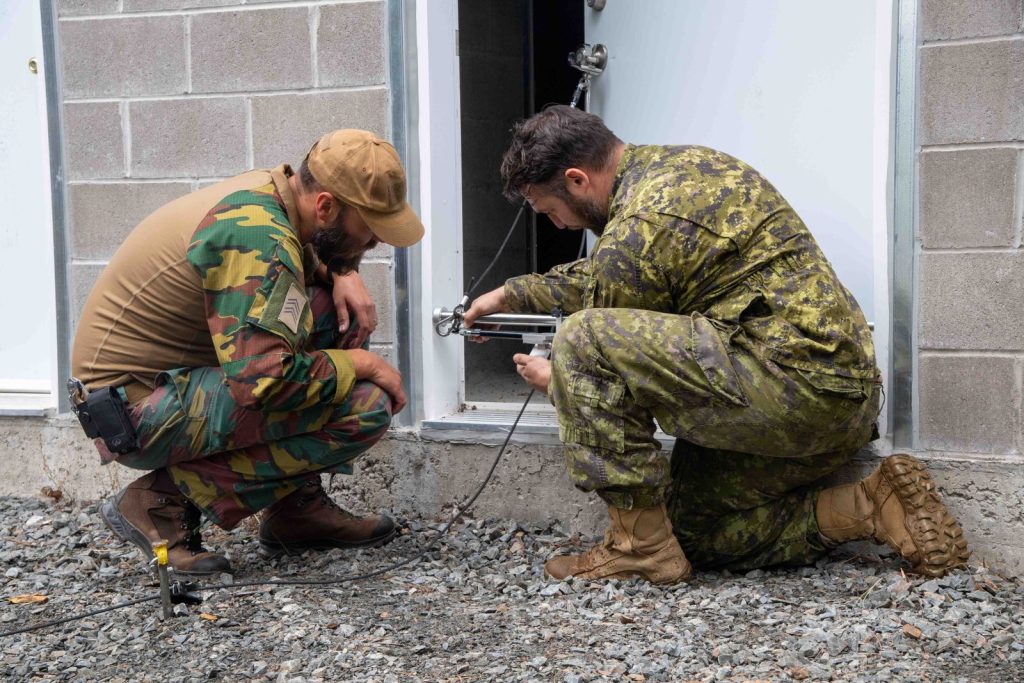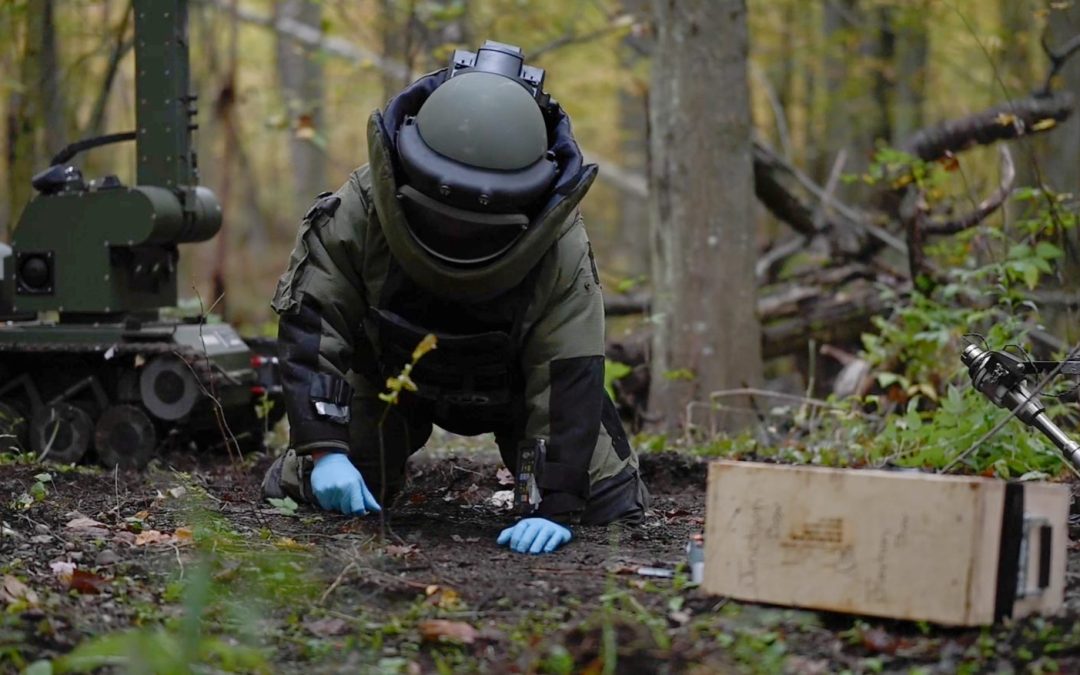by Ken Pole
Of the 159 Canadians who died during this country’s decade-long combat mission in Afghanistan, the majority were victims of improvised explosive devices (IEDs). Hundreds more were wounded or otherwise traumatized.
Major Pete DesRoches, a combat engineer officer, is leading an Army program designed to reduce the probability of it ever happening again. The Advanced Improvised Explosive Device Detection and Defeat (AIEDDD) project he oversees within the Directorate of Land Requirements (DLR) is designed to minimize this type of threat by using more modern technology.
He was tasked with the job at a time when Canada, like the rest of the world, was learning how to work remotely due to the coronavirus pandemic, and quickly moved the project through critical early phases. In late February, he told Canadian Army Today that it is moving toward the definition phase, “probably this fall.”
But it took a while for the Army to generate enough steam to get things moving. Like many other Army projects, AIEDDD went through years of concept development before being given the green light by the government the 2017 defence policy, Strong, Secure, Engaged.
Although an Army project, it is also developing and maintaining counter-explosive threat equipment capabilities across the Army, Navy and Air Force.
The need for a modernized approach to a pressing tactical problem was underscored in Afghanistan as the Canadian Armed Forces (CAF) initially countered Taliban tactics such as improvised explosive devices (IED) with equipment and techniques past their prime.
“IEDs basically became the signature, the weapon of choice amongst the insurgents we were up against. That became the biggest threat we had to combat there. Unfortunately, we weren’t well-equipped to take on the task that was set for us at first. But during those first few years, we did some amazing work in restoring some capabilities as well as revitalizing the EOD (explosive ordnance disposal) training CAF-wide and institutionalizing tactics required to counter explosive threats being used as the weapon of choice.
“However, even before that, things had started to degrade through Bosnia and Kosovo,” he noted. “Years of UN peacekeeping around the world and into the Balkans that focused on mine detection did not prepare us well for Afghanistan.”
With Afghanistan concluded, the Army must now deal with the fact that “some of our current capabilities are dated and no longer supportable,” DesRoches explained. “In many cases, the parts are simply not available to maintain some of our equipment, making it necessary for us to procure a new system.”

On Ex Ardent Defender 22, a CAF member explains how use the hook and line system to open a door to a member of the Belgium Armed Forces. Photo: S1 Larissa De Guzman
Through the AIEDDD project, the Army is seeking to rejuvenate some capabilities while also looking to the future, with the development of new capabilities like high energy laser (HEL) systems to destroy scattered munitions from a safe distance.
“Right now,” he said, “we’re trying to renew our UGVs (uncrewed ground vehicles),” tracked robots with various capabilities. “We’re looking at two new systems: one classed as a mini UGV as well as a replacement for our current small UGV, which is used primarily for confined spaces. The manufacturer has informed us that they are ceasing support. That’s the hard truth about a lot of our equipment — we hang onto it for so long that it gets to a point where it is no longer maintainable.
“We’ve done mid-life upgrades to the current small UGV and [the manufacturer] told us well in advance that they’re no longer going to support it. We’ve got to get this project done so that we can deliver something our EOD teams can work with.”
Without the UGVs, EOD operators will have to turn to bomb suits, which is the last resort, he said. With newer UGV and UAS technology, “we are trying to increase the stand-off distance for operators from explosive threats to maintain their survivability.”
DesRoches dismissed the prospect of autonomous UGVs for counter-explosive work for this project, suggesting the technology has not advanced that far — yet. “The UGVs that the operators use will go downrange with cameras, x-ray systems and sensors to enable us to figure out literally what makes a device tick and then how to render it safe by blowing it up or dismantling it.”
The Army also is looking at small uncrewed aerial systems (UAS) that can be used to scope out the best route for an EOD operator to send a UGV to a suspected IED location or for searching a building before sending in a UGV or doing a manual approach.
Defence R&D Canada has been a key to UAS testing for the Army, DesRoches added, conducting trials which he expects will support DLR’s approach to prospective suppliers when it solicits requests for proposals.
Domestic industrial input into the UAS element of the AIEDDD project, however, may be minimal. “We’re leaning quite heavily on work that the U.S. has done with the Blue UAS list,” DesRoches noted. The Blue list is a list of UAS classes that have been preapproved for use by the Department of Defense after going through various checks to confirm they contain no foreign technology.
“That’s going to be one of the key criteria for us in getting a system,” he said. “We want to ensure that we don’t end up with something that’s going to compromise the security of other systems.”

